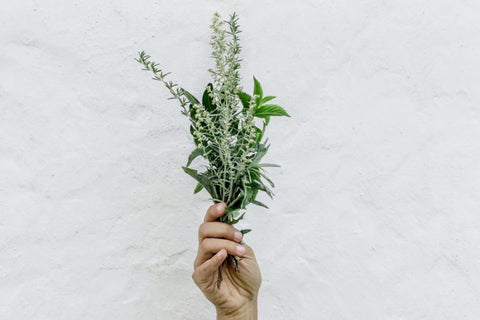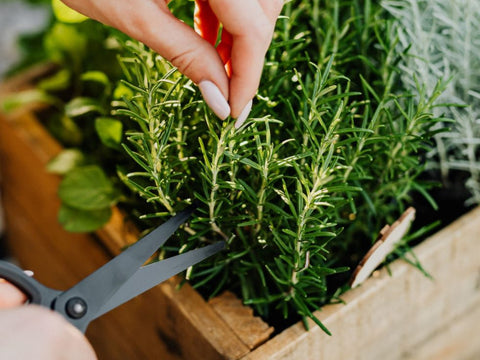Store-bought tender herbs rarely make it to the plate – we’ll use a couple of leaves from the little plastic clamshell and return the package to wilt in our fridge before throwing it out the following week. Either this, or we won’t want to run out to pick up basil because our pasta will be fine without it. On the other hand keeping a live plant, where you can just pick what you need is easy – as long as you give them enough water and nutrients (and enough light too, of course). In this blog, we’ll review the category, your planter options, and how to take care of them for healthy, productive plants.
What are the Tender Herbs?
These are low growing plants with soft, large leaves that are native to places like riverbanks, where rich soil and consistent access to water allows them to grow quickly. They include Basil, Parsley, Mint & Lemon Balm. From a culinary perspective they’re “Soft Herbs” that you add fresh while cooking – right at the end of the recipe. They also tend to be shorter lived seasonal plants, but there are some indoor gardening tricks to keep them producing longer – some for years and years!
What’s the best planter for Tender Herbs?
Free Draining Pot vs Self Watering Planter
These plants like consistent, moist soil. If you’re good about daily check-ups, feeling the soil moisture, and adding water as needed, then a simple pot can work well. If you’re like most of us, and are better with a weekly routine or don’t know how much water to add, a self-watering planter is really helpful. Beyond fitting into our lives better, they keep more consistent soil conditions for the plants. So for practicality and productivity reasons, we recommend going with a self-watering planter over a free-draining pot for all tender herbs & leafy greens.
The roots of these plants are more resistant to root rot (unlike the Mediterranean herbs) so they can work in all types of self-watering planters. We still recommend going with a ceramic-based self-watering planter for its precision, cleanliness, and flexibility to grow whatever you want, but these plants should also work in the boggy soil of wick-based planters.
Self Watering Planter vs. Hydroponics
As these plants like wet soil, they can also all grow hydroponically – where the roots grow directly into nutrient enriched water. Hydroponics come in all shapes and sizes, but they typically have a pump to move water and need a special type of nutrients, so they tend to be more expensive. Also, these grow just as well in consistently moist soil, so we don’t find hydroponics to be worth the extra complexity. However, Basil, in particular, can grow twice as fast in hydroponics so if lots of basil is important to you, it’s worth the investment.

How to Grow Leafy Greens in a Ceramic Self Watering Planter
The instructions below are most relevant to our upcoming Self Watering Planter that we’re aiming to release summer 2021. There are a couple of current options on the market, including Wet Pots, COSWIP, and the Great Northern. Of these, the Wet Pots keeps the best soil moisture levels for tender herbs.
Water Level
The ceramic material used in different planters lets in different amounts of water, but the wetness of the soil will be directly proportional to how high you fill the reservoir. Other factors like how big your plant is and how much light it gets will impact the level that you’ll want to fill the reservoir to – so it’s best to pay attention to the soil. With tender herbs, you want to keep the soil fairly wet. Start by letting the water drop down until the top ½ inch of soil is dry – this is your “low fill” line. Fill the planter to the top whenever it goes below this mark.
What Type of Soil to Use
Regular potting mix is made for these types of plants – it works great! When starting, we recommend adding an initial charge of balanced slow release fertilizer, following the manufacturer’s recommendation that will help feed your plant for the first 3 months.
When to Add Nutrients
These are moderate feeders – they grow quickly so need additional nutrients to replace what they use. As they are mostly growing leaves they prefer a High-N fertilizer. If you start to notice pale leaves or slower growth you should add more fertilizer. You can use water soluble (every 1-2 weeks), granular (4-8 weeks), or slow-release (10-14 weeks) following the manufacturer’s dose. If you are using a liquid fertilizer, be careful to not get it on the plant leaves.
Companions
Mint and lemon balm tend to be so aggressive that they’ll end up taking over a container if anything else is planted with them. Basil and Parsley make good companions for Leafy Greens and Vegetables.











There are no comments for this article. Be the first one to leave a message!